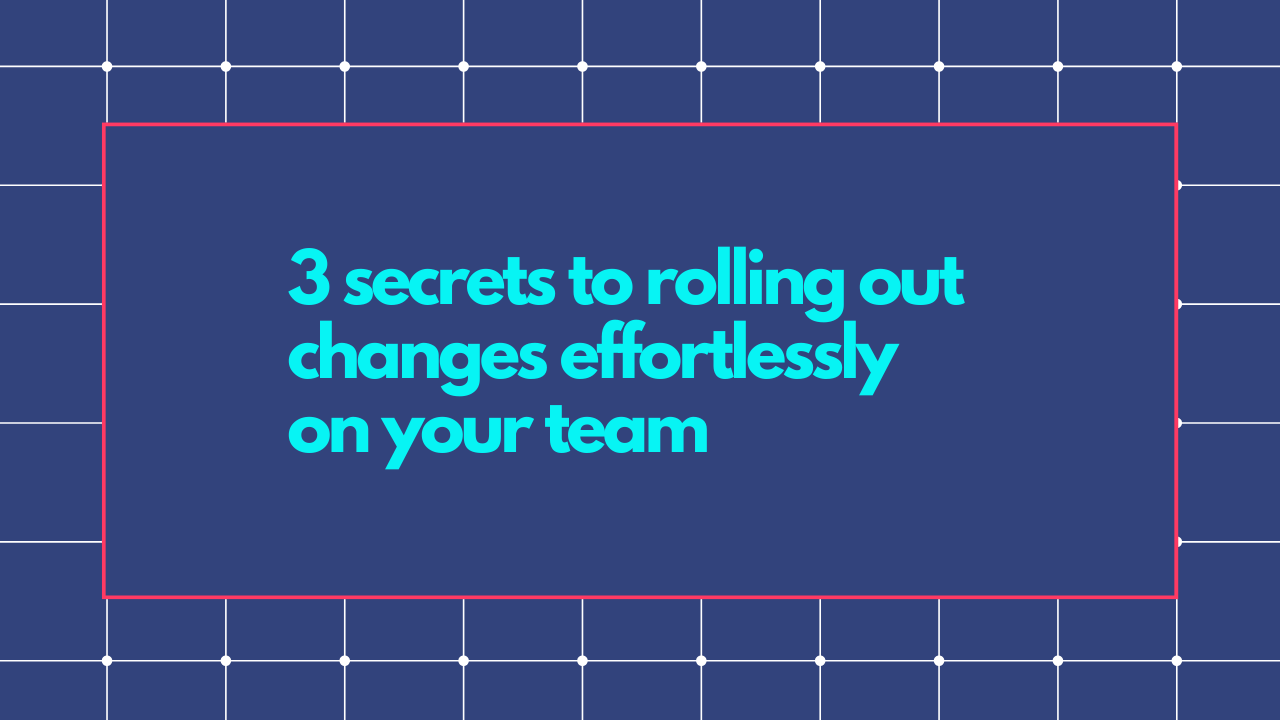Lately, we’ve been discussing ways to manage operational changes with your team. Today, I want to talk about some reasons why operational changes aren’t getting implemented as smoothly as you think they should be…because the problem probably isn’t what you think it is.
A lot of times, when we have a lightbulb moment as a business owner or team leader, we get really excited about it. We go all-in, we get somebody on board to roll out the change…and then it fizzles out.
What happened? We were enthusiastic, we put someone in charge, we had a great idea—why didn’t it click?
There are a few common things that often get in the way of successfully implementing operational changes that you want to make for your team. Luckily, there are also a few super simple ways to mitigate those things and get your operational changes back on track!
Listen on Apple | Listen on Google | Listen on Spotify
The Real Problem
So, why is this issue of change so near and dear to my heart?
Operational changes—especially changes in the way work gets done—can be the toughest changes to make. Shifting operations around things like planning, how we track time, what our goals are for the quarter, how we’re reporting status on projects, how we’re communicating to upper management…all of those things can create sticking points that make it so hard for folks to get the work done.
But when you get through that and get those operational changes implemented, those operational changes are also the things that make it so freaking easy to get work done.
That’s why this is so important to me. Because when we make it easy to implement these changes, your team will start to see what’s in it for them, and then everybody will start to reap the benefits.
While driving team operations for over a decade in the corporate world—doing this work at Bank of America, at Apple, at Microsoft, and at Google—I found that more often than not, these breakdowns in rolling out change weren’t in the change itself. Instead, the breakdown often showed up in how we rolled those operational changes out.
Specifically, the breakdown often happened because the leader—the person that we really needed out there championing those operational changes—wasn’t actually sticking through it and hold folks accountable through the entire transition.
As that leader, it is so paramount that you champion your change all the way through, whether we’re talking about rolling out a task-tracking system, a time-tracking system, implementing days in the week to return to working in the office, or something else.
Your teams are looking to you. They’re looking at you and measuring your commitment and enthusiasm to see if they’re really going to get on board with this change. And if you don’t keep your narrative on the change consistent through the whole process, that’s where things are going to break down.
Three Ways To Simplify Changes to Team Operations
One-Time-Only Feedback
One way that change can get gummed up is if you allow open discussion and feedback around a possible change, make a decision, then reopen that forum at a later date.
When making a change, even if you and the majority of your team members decided that change was a good idea, you’ll have some naysayers. And the problem starts when you hear those naysayers continue to complain, and you decide to reopen the choice to make this change in your operations for further discussion.
I know you want to hear people out, and you should! However, you’ve already heard these people out, and you already came to a decision that you feel good about.
Reopening the discussion can then break down the integrity of your decision, as well as the accountability of your team to participate in that change.
If you give in to the naysayers, your team will see that even after you decide on a plan, they can question it as much as they like, and it might get reversed.
We don’t want to do that. We’re setting up professional work environment. We want people to be accountable to the work and accountable to the decisions that are being made for the best interest of the company and the team members.
I would strongly suggest instead encouraging a “disagree and still commit” method of making decisions. Team members are allowed to disagree with a choice, but we still need them to commit. We of course can be open to feedback and adjust if needed, but we need to be careful about holding our ground around those changes.
One thing you can do to ensure that you have a successful change without too much disagreement is to present it with excitement and enthusiasm.
You want to set expectations with your teams that you are excited about this. By framing it with your excitement, you can present that you’re aware of the problem you’re trying to solve, you’ve listened to feedback, and you’re taking an active role in championing this change.
By setting the expectation that you want this change and you’re on board, not only do you accomplish the modeling that you need to do with any change, you also show people that if they’re going to start dissenting, they’re going to have an uphill battle, because you’ve already said that you’re bought in.
Empower Your Ops Manager
This one is especially important if you are tasking someone else with rolling out this change. Whether it’s an ops manager, a project manager, a program manager, an account manager, an admin, a virtual assistant, a consultant, etcetera…if you are asking someone else to roll it out, you have to give that person air cover.
Here’s what I mean by air cover: you want to stand in front of your team and say, “Hey, I am so excited. I have asked Lia to come in here and take a look to see where these things are causing more stress than they need to be, to help you guys, and to implement this change. When Lia asks you about this, please answer her questions, sit down with her, and give her your best.”
By doing that, you are setting the stage for the person who’s implementing it to actually do so successfully. I’m telling you right now, if you don’t do that, it is going to be so hard for that person to actually make any headway.
Change is tough for folks, no matter how good for the team it might be. So if we don’t provide that air cover at the beginning, our team members are going to look around and be like, “Why is Lia asking about my timesheet? Why is this new person over here asking me to track my work in this tool? No, I’m not doing that.”
Enlist an Internal Supporter
This is a major step in rolling out operational changes. You always want to enlist internal supporter or set of internal supporters that will champion your operational changes.
Why is this so important? Because when we’re rolling out operational changes, big or small, there are going to be a lot of folks who go, “Oh, I don’t know about this.” So having people at all levels within your team be able to share the upsides of these operational changes, why they’re excited about them, and what they see as a win with these changes will quiet some of that negative chatter.
Now, this isn’t about like brainwashing people and telling them everything’s fine if it’s not. This is about having people who can already see through to the other side of these operational changes and are able to advocate for them. That’s going to give you that boost over the line that you need.

Need Some Support? Schedule an SOS Call!
This is one of the places where I really like to dig in with folks who schedule an SOS consult call with me. I like to sit down with them and figure out where things they’re trying to implement are getting stuck, where the process feels harder than it needs to be, and who is actually driving that narrative. Because once we identify those things, particularly who’s dissenting the strongest, we can figure out how to get those people on board.
So if you’re finding that key people in your team aren’t getting on board with your operational changes, or if you aren’t sure what’s causing the jam, let’s do that SOS call. In that conversation, we will dive into exactly where things are getting stuck, what the messaging has been like to date, and how you can fine-tune and reframe that messaging a little bit to get those people on board. Scroll down and click on that link now to get on the schedule!
WORK WITH LIA:
Wrestling with an issue with your team? Schedule an hour-long SOS call with me: https://www.liagarvin.com/sos
Want a checklist of things you can do THIS week to become a better manager (and make your job easier)? Check out my Thriving Team Checklist for a list of quick actions you can take right away with your team: https://www.liagarvin.com/checklist
Book a FREE Scale-up strategy call to for strategies to scale your team and get time back for yourself: calendly.com/liagarvin/scaleup-strategy?back=1&month=2023-08
CONNECT WITH LIA:
Website: https://www.liagarvin.com/
Instagram: https://www.instagram.com/lia.garvin/




